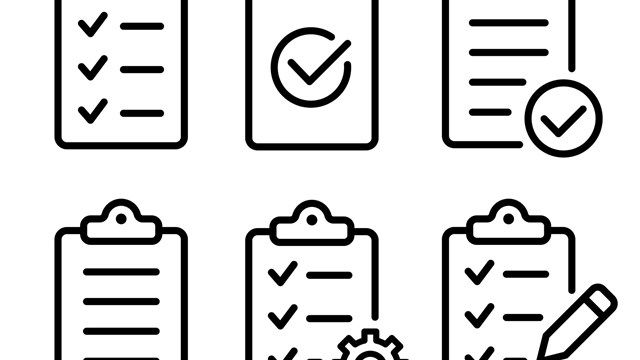Unless it's a thoughtful gift or a party in their honor, nobody likes surprises. That's especially true when it comes to sudden, serious, or non-negotiable repairs to a condo building or HOA. A community must have enough money saved to deal with major projects as they arise, or risk major financial and structural troubles. But economic woes of residents such as unemployment or default, or living on tight fixed incomes, means more HOAs are finding it difficult to keep their reserves adequately funded.
Having a robust reserve fund is important for those reasons, as well as a newer one: under the new federal mortgage funding rules courtesy of Fannie Mae and Freddie Mac, an association must have at least 10 percent of its budgeted income in a capital reserve fund to be eligible for a loan—or for some prospective buyers to qualify for individual mortgages.
The Basics
Mitch Frumkin, PE, RS, CGP, is founder and president of the North Brunswick-based engineering firm Kipcon, Inc. “A reserve fund can also be used as a planning tool,” says Frumkin. “If the roof has one year of life left, the manager might say, `I’m going to have to spend that money a year from now, so let’s start getting the specifications and go out to bid.” Frumkin chaired the Community Associations Institute’s (CAI’s) national task force to come up with national standards on reserve studies, and in 2003 he was involved in the rewriting of the American Institute of Certified Public Accountants’ chapter on “Future Major Repairs and Replacements” in its Common Interest Realty Associations Guide.
How Much?
How should buildings calculate the appropriate amount for their reserve fund? Experts agree that the amount of funding is based on how much money the association projects it will need within a 30-year window, although some studies will cover 35 or even 40 years. They also say that updates of the study should be performed every three to five years or so.
How is the amount of money needed for a reserve fund calculated? We received several answers for this. For example, Leonard Barber, CPA, president of Executive Property Management in North Brunswick, says the variables include age, expected life span, current condition and replacement cost. Roads and roofs are often overlooked but should definitely be considered.
“Most major projects,” he says, “require engineering plans and specifications, legal documents and review of contracts, project supervision and often incur added expense for unanticipated cost. We have often recommended to the engineer performing the reserve study to increase the project costs by 8 percent for professional services and 10 percent for contingencies.” An inflation factor, he adds, should also be introduced into the calculations.
Three Methods of Calculating
Jules Frankel, CPA, a shareholder at the accounting firm of Wilkin & Guttenplan in East Brunswick, says there are three methods of calculating the needed amount—baseline funding, threshold funding and full funding.
While these methods are fairly complicated, the full funding plan concept is one in which the goal is to attain or maintain reserves that are at or near 100 percent funded. For example, an association has roofs with a current replacement cost of $250,000 and the roofs have a life expectancy of 25 years. For the sake of simplicity, ignoring the impact of inflation and interest rates, the association should be setting aside $10,000 per year for the eventual replacement of the roofs. After seven years, this line item would be considered 100 percent funded if the association has set aside $70,000. After eight years, it would be considered 100 percent funding if $80,000 were set aside, and so on.
Baseline funding, according to Frankel, is a methodology where the funding goal is to keep “the reserve cash balance above zero.” Its underlying philosophy is “to collect when you have to pay.” Rather than fully funding each individual component, baseline funding focuses on making sure there is enough cash flow to make necessary repairs and replacements on an as-needed basis without fund balances going below zero.
In threshold funding, a variation of baseline funding, the goal is to keep “the reserve balance above a specified dollar or percent funded amount.” One method of threshold funding, he says, is to maintain funding at a percentage lower than 100 percent. However, in this model “there are no official guidelines or standards regarding what the threshold balance is, in either minimum dollars or fully funded dollars.”
Summing up, Frankel says that associations can “proceed without hesitation” in adopting full funding. If considering either baseline or threshold funding, he says, “look very carefully before you leap.”
More Things to Understand
The first step in bolstering your HOA's reserve is by hiring a qualified engineer to do a reserve study. According to Frumkin, “when you do a reserve study, there are two parts, physical analysis and financial analysis.” Any professional that does a reserve study must understand both.
Once a reserve fund is created, it should be kept separate from other monies held by the association. Most of the time, boards invest money from the reserve fund in safer investment alternatives such as CDs, treasury bonds and so on. It would be very unusual for a board to invest its reserve funds in something as volatile as the stock market, for example.
If Funds Aren’t Enough
What happens if you don’t have enough funds in your reserve? “Without proper replacement reserves on hand, a board tends to put off major repairs and replacements,” says Ramon Cuevas, vice president of business development for Association Advisors, a management firm in Freehold. “This affects the appearance and safety of the common areas and has a negative impact on values.” We’ve already mentioned the difficulty in meeting mortgage guidelines.
In addition, says Barber, if an association delays a project, it may have to deal with a steep rise in prices of raw materials—if both road and roof replacement have petroleum-related components in their materials, for example. “We have seen significant increases in their costs over the past five years due to higher oil prices,” he says.
If the association doesn’t have enough money in its reserve fund and something unexpected comes up, the board would be forced to either levy a special assessment on residents or take out a loan. Neither option is ever popular with unit owners.
Attorney Hubert Cutolo of The Cutolo Law Firm in Manalapan adds that New Jersey’s Planned Real Estate Development Full Disclosure Act (PREDFDA) requires that associations must “prepare and adopt an operating budget which will provide for … adequate reserves for repair and replacement of the common elements and facilities.” Thus, he says, a condo board that fails to set aside adequate reserves could be found to have breached its fiduciary duty.
In addition, he says, some potential unit buyers review the current reserve report and amount before purchasing—and if the reserves aren’t adequate, the prospective buyer may refuse to finalize the purchase.
Most professionals recommend that reserve studies be done or updated every three to five years. We’ve already mentioned that there are two parts of the study: physical and financial. Frankel describes this in detail: “The physical analysis says, `These are the assets I have: so many rooms, so many feet of sidewalk, bleeders and gutters [on roofs], this is how much I think I will replace,’ ” Frankel says. “The second part is the funding plan. That’s where the numbers are crunched so you can suggest to the board how much money to put every year into a separate, segregated fund.”
Cost of a Study
What is the cost of a reserve study? Like most services, the cost varies depending on the size, age, and structural complexity of the community in question. According to Barber, “If the community simply requires an update of existing costs and a simple evaluation of their remaining useful lives, then the cost would be in the $1,000 to $2,000 range.” But if the community requires a more extensive evaluation of the capital components, through a detailed engineering inspection and analysis, he says, it will probably cost well above $3,000.
Engineer Andrew Amorosi, a principal of the Falcon Group in Bridgewater, puts the range from as little as $1,500 to upwards of $5,000 or more, depending on the size and age of the community or buildings and the extent of the amenities. He adds that a report is usually issued within 60 days, “but a more immediate reply is not uncommon.”
The cost, adds Frumkin, is higher for a high-rise building because of a greater amount of mechanical equipment. “If you’re dealing with community association townhouses, you’re primarily dealing with roofing, sidewalks, etc., which are much more less complex, and the cost will be significantly less.”
Special Designation
Engineering firms typically perform reserve studies, but beyond that level, the Community Associations Institute (CAI) has a special designation for reserve specialists. Frumkin, who is one of these specialists himself, estimates that there are about 200 to 300 people with this designation nationwide.
In the course of the study, Barber feels that it is important for boards and managers to make sure they receive a draft copy of the study before a final one is issued. In this way, boards can “make sure that all capital items have been included and that the useful lives and remaining useful lives are reasonable.”
The reserve study is an important resource for the board and manager, which say Cuevas and Amorosi, should be incorporated into the annual budget.
It’s Essential
Financial benefits aren’t the only ones coming from a reserve study. For example, such a study could possibly prevent insurance claims and costs by identifying structural problems that need immediate repair. It’s also a good protection for unit owners and the interests of the developer. “Maintaining adequate reserve funds will make every unit in the building of an association more valuable and marketable,” says Cutolo.
“Prospective purchasers may refuse to purchase units in which special assessments may be levied in the future. Moreover, if there are adequate funds in reserve, units will be more valuable, since purchasers are assured that the association will be financially healthy,” he says.
When it comes to our communities and homes, financial surprises are rarely welcomed. Getting a comprehensive reserve study, updating it on a regular basis and keeping it at the level it requires will ensure that those unhappy and unexpected financial bumps in the road are few and very far between—something all homeowners can appreciate.
Raanan Geberer is a freelance writer and a frequent contributor to The New Jersey Cooperator.







Leave a Comment